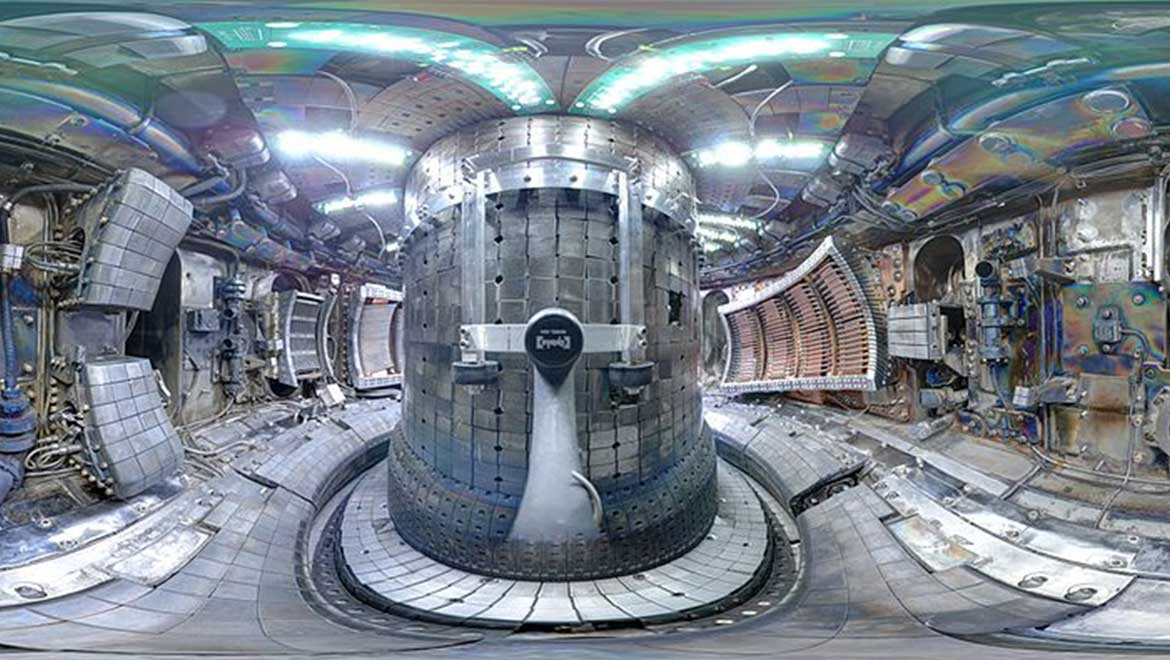Nuclear fusion was once thought of as the ‘holy grail’ of energy-generation and delivery. This kind of reaction involves the formation of two- or three-atom molecules of pure hydrogen, then pressing these together to form new atoms of helium, most often. Fusion has potentially desirable side-effects, such as the release of energy in the form of heat at astronomical temperatures.
However, this nuclear process has historically been very hard to control. In addition, the heat produced as an end result may also be highly dangerous if it were to escape the fusion facilities. Therefore, nuclear fusion had fallen out of favor for decades, while scientists turned to alternative forms of energy.
However, the fact remains that fusion could conceivably provide all the energy the world could need, with manageable environmental impacts. Therefore, some researchers project that this rather extreme proposal for power supplies could be acceptable in as little as 30 years from now.
Novel Versions of the Nuclear Fusion Reactor - Tokamaks
A number of high-profile institutions, like MIT, have groups dedicated to the study and development of fusion power.
Currently, these organizations use model fusion reactors known as 'tokamaks' to simulate, test, and even, enact fusion. Tokamak scientists assert that their novel form of the reactor is smaller, cleaner and more efficient than the more primitive predecessors.
Tokamaks such as these can be found in installations in the MIT’s Plasma Science and Fusion Center (PSFC). The PSFC’s latest model was the Alcator C-Mod, in which a magnetic field, more than 100,000 stronger to that of the Earth, drives plasma formation. However, the C-Mod ceased operations in 2016.
The PSFC also proposes the construction of a subsequent reactor known as SPARC. SPARC is believed be the size of a conventional medium nuclear reactor, although its magnetic field properties are to be considerably improved compared to present-day devices. SPARC could virtually model an actual use-case for a real-world reactor, and it is projected to be able to deliver up to 100 megawatts of power.
ITER is yet another tokamak currently under consideration for operation in France. As with SPARC, this device could further fusion research and feasibility estimations for tokamaks, as an actual power source. ITER scientists project that fusion would generate energy by heating water into steam, which would, in turn, operate turbines and power plants.
However, both SPARC and ITER scientists would have to concede that this process is still well out of reach. The heat and current involved in generating and heating plasma to the required temperatures mean that the actual output of a tokamak would just about balance it out, at best.

The JET Tokamak (with plasma represented in purple), another reactor located in Europe. (Source: CCFE, JET)
Challenges & Possible Solution for Nuclear Fusion Reactors
Fusion science is beset with additional challenges. These mainly concern the prevailing difficulties in getting plasma reactions to remain consistent and replicable.
In a nutshell, plasma does not necessarily co-operate with the ultimate goals of fusion (i.e., to form helium with the release of heat at a few million degrees). This leads to plasma disruptions and the absence of successful fusion; the process is typically influenced by myriad factors.
These variables were studied using batteries of equipment installed in conjunction with tokamaks, including X-ray spectrographs and advanced magnetometers. The instruments have already generated a vast trove of raw data, the analysis of which, using conventional means, has been difficult and prone to human error.
However, 21st century methods could help solve these problems.
Dr. Cristina Rea, who recently took up a position at the PSFC, saw the potential of AI to process ultra-high-volume data, into more usable analyses and conclusions, in other fields of work. Therefore, she is currently engaged in the application of machine learning to the problem of plasma disruption and how to predict it in a tokamak environment.
This ability could help fusion scientists foresee the disruptions. The solution may also enable the researchers to ameliorate such an event, and instead, keep optimal plasma formation and fusion going.

Our sun also performs fusion all the time. (Source: NASA Goddard Space Flight Center @ flickr)
Dr. Rea now aims to create a unified, worldwide database for plasma-fusion data, particularly as it relates to disruption. This may increase the chances that AI can detect and characterize the patterns associated with disruptions, and how they start.
The inclusion would be particularly valuable to fusion scientists, who are, probably, frustrated with their inability to keep fusion going as it does in the center of our solar system all the time. Therefore, this work may, finally, help these professionals perfectly replicate the process here on Earth.
Time, energy demands and technology advances in other areas of alternative power sources will determine if this concept could indeed become necessary in the future.
Top Image: Interior shot of the Alcator C-Mod. (Source: Bob Mumgaard @ Wikipedia Commons)
References
Taming fusion with machine learning, 2018, MIT News, https://news.mit.edu/2018/taming-fusion-with-machine-learning-cristina-rea-0702 , (accessed 4 July 2018)
Making it workg, 2018, iter.org, https://www.iter.org/sci/makingitwork , (accessed 4 July 2018)
Alcator C-Mod tokamak, 2018, PSFC Research Topics, https://www.psfc.mit.edu/research/topics/alcator-c-mod-tokamak , (accessed 4 July 2018)
SPARC, 2018, PSFC Research Topics, https://www.psfc.mit.edu/research/topics/sparc , (accessed 4 July 2018)
K. M. Agah, et al. (2015) Energetic electrons, hard x-ray emission and MHD activity studies in the IR-T1 tokamak. J Xray Sci Technol. 23:(2). pp.267-274.







No comment